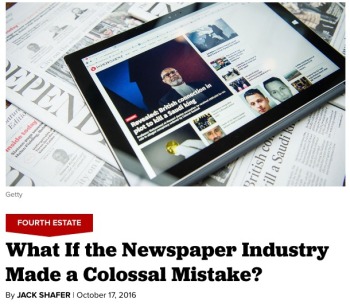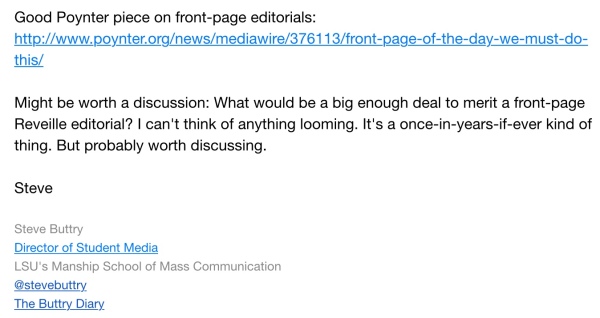If you asked me when is the best time for me to post on my blog, I’d say about 8 or 9 a.m. That’s when journalists in the Eastern and Central time zones are starting their workdays and most likely to read my posts, comment, share them in social media and so on.
I came to work yesterday intending to blog about Jack Shafer’s post and Iris Chyi’s research on newspapers’ digital strategy. But a class and other matters demanded my attention in the morning and I couldn’t start writing the post until mid-afternoon. By the time I’d finished, it was after 4 p.m. The normal workday (not that journalism has such a thing) was ending on the East Coast. I briefly pondered waiting until the morning to post. But I was already late in joining the conversation (the last half of my post curated some of the social media conversation Jack’s post had already generated).
I knew I should jump into the conversation right away. I was already late, and if it didn’t get much attention, that was too bad. So I posted at about 4:20 p.m.
And people noticed. Forty-three people retweeted me and at least that many more tweeted new links to the post. Still more shared, liked or commented on it on Facebook. By almost 8:30 a.m. this morning, when I might have been publishing if I had waited till morning, 2,300 people had read the post, with Twitter accounting for more than 1,000 hits on my blog yesterday and Facebook 500, even though we were just barely entering the primary workday in the Eastern and Central time zones.
That’s not a ton of traffic, but my blog usually runs a little under 1,000 views a day (I haven’t been blogging as much the past few months).
The overnight attention underscored a lesson I’ve learned and relearned many times: The perfect time to join a digital conversation is right now.
 I hesitate to give more attention to a study and Politico Magazine column that comforted newspaper nostalgists, but I must: Both are BS.
I hesitate to give more attention to a study and Politico Magazine column that comforted newspaper nostalgists, but I must: Both are BS.


